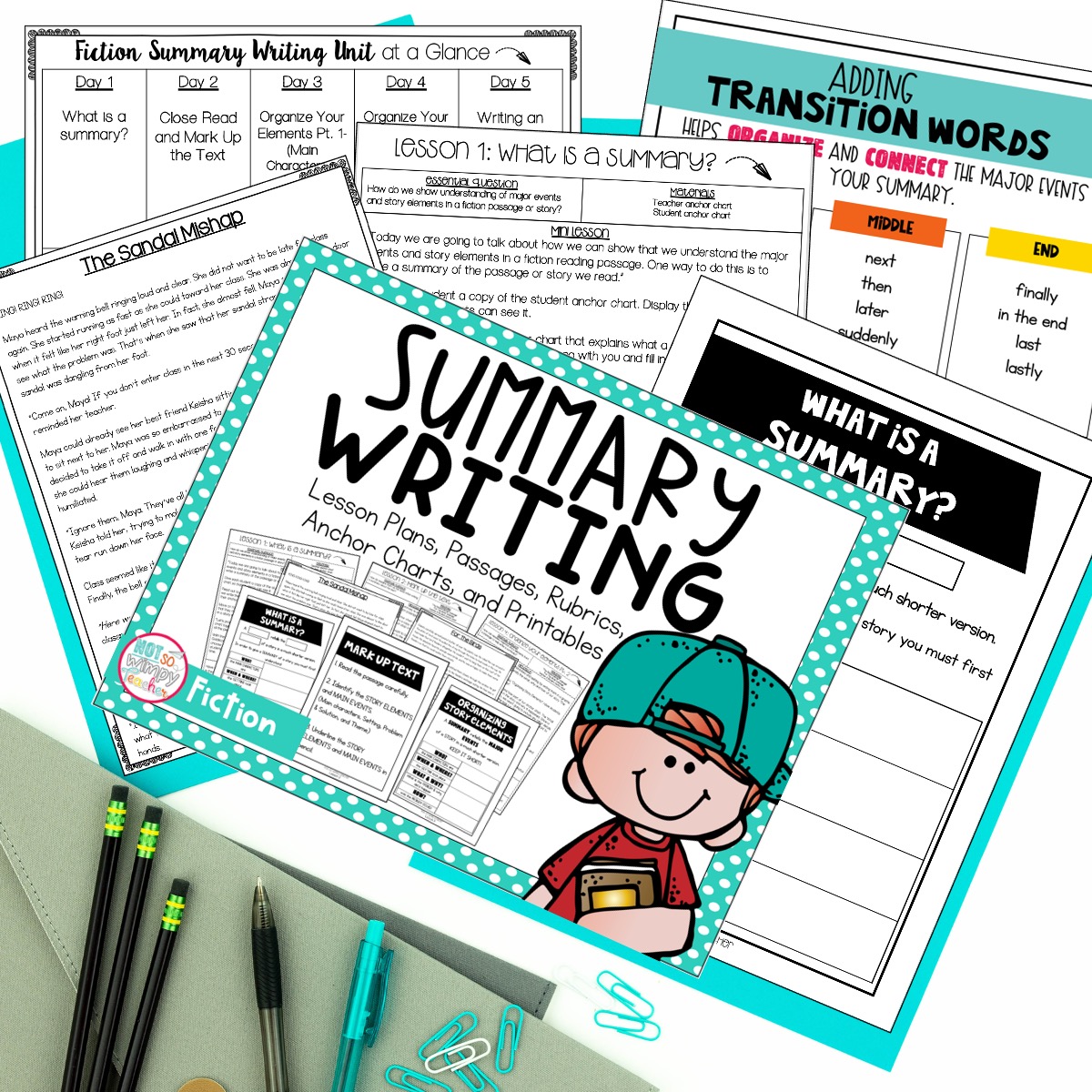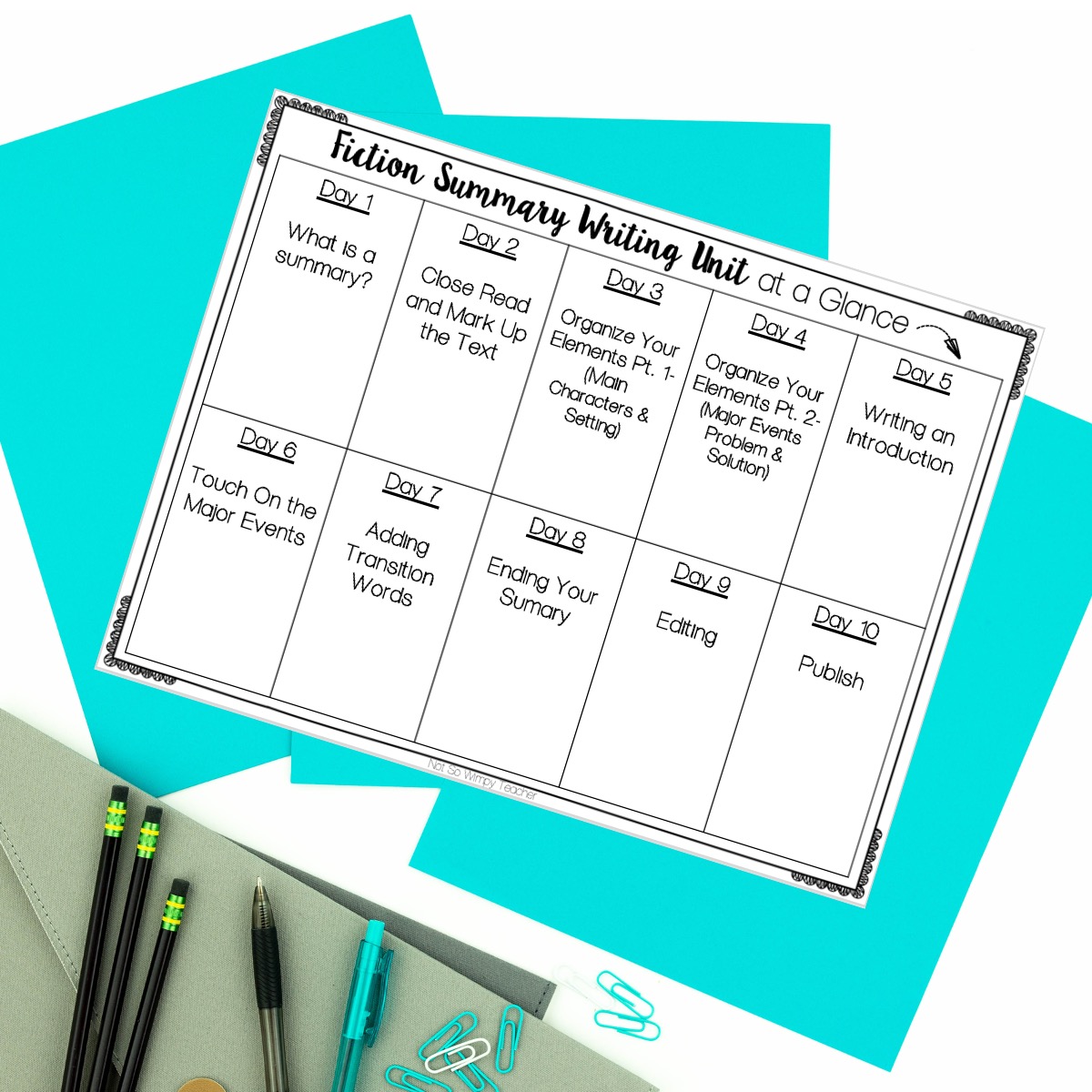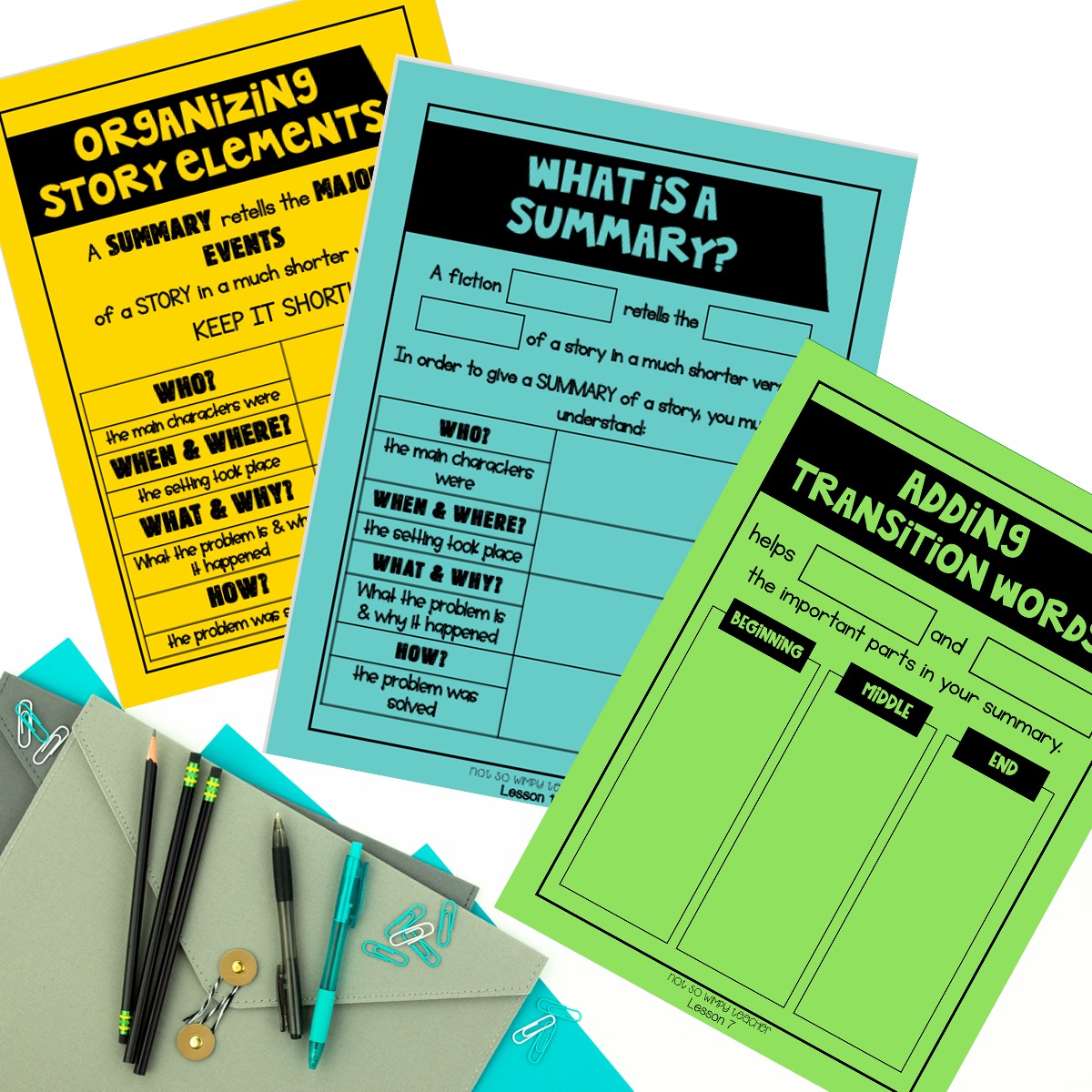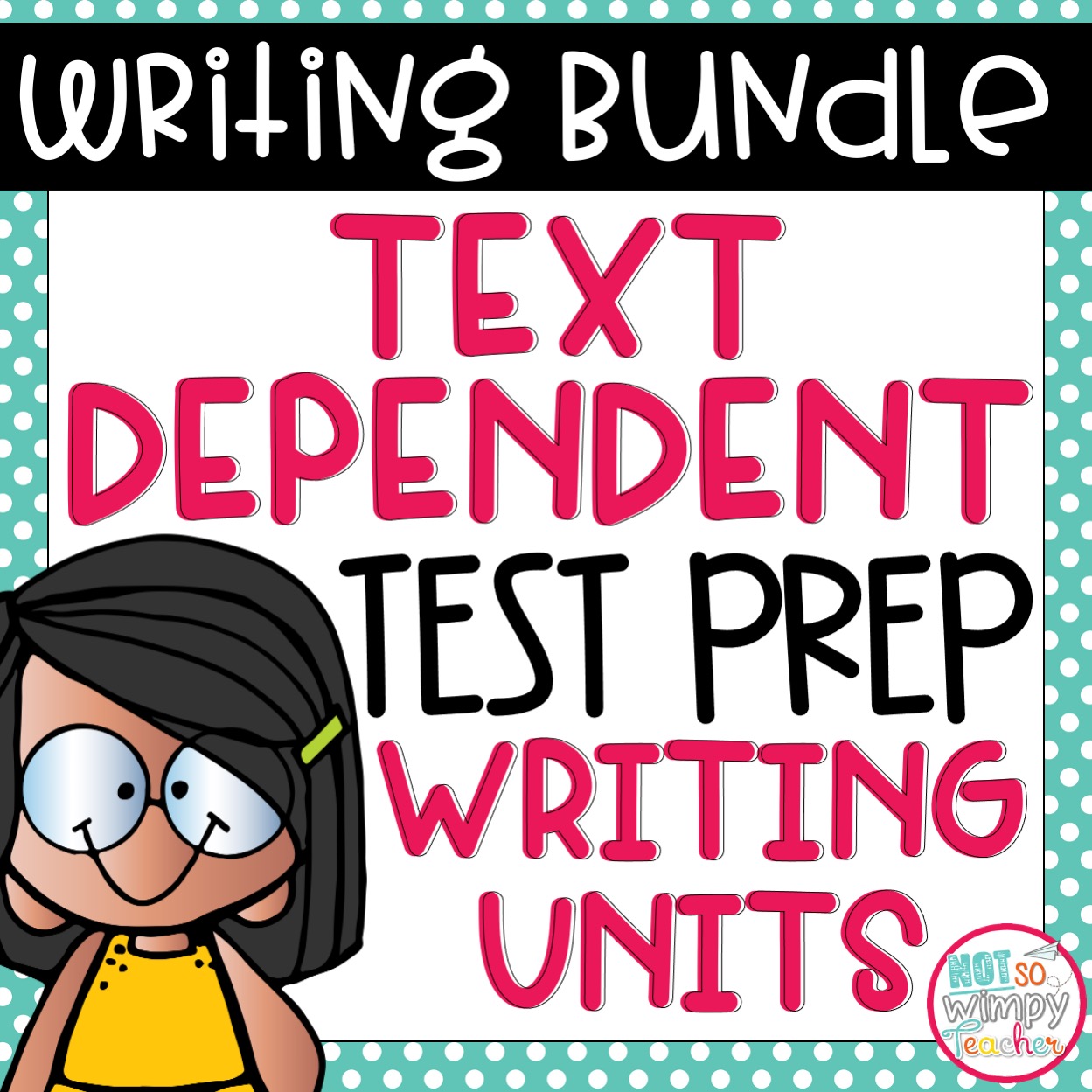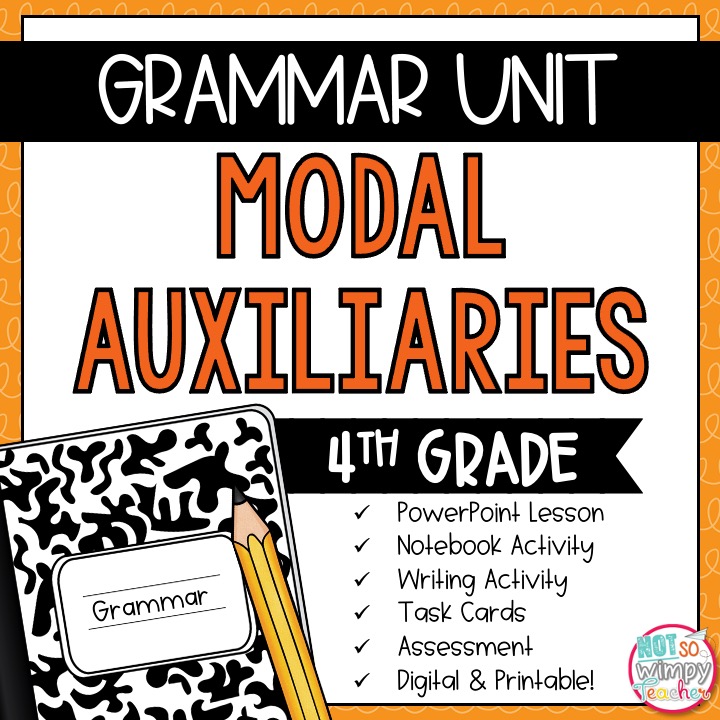In this unit, students will learn all of the skills necessary for writing a strong fiction summary. These skills are broken down into small bite-size pieces that make it easier for our students to be successful.
Fiction Summary Reading Response Writing Unit
Save MORE with Lesson GenieMore about this resource
You know how it is. You ask your students to write a summary of their weekend.
One student writes, “I was sick in bed. The end.”
The other 25 fill 3 sheets of notebook paper. “First, I woke up. Then I played Fortnight while mom made breakfast. We had Funfetti pancakes. With whipped cream. Saturdays are my favorite! Then we watched Hotel Transylvania. Then we got dressed. I wore my favorite shorts and the alien top; the one mom won’t let me wear to school . . .” And on and on, until they’ve recounted every last detail of their weekend.
Summarizing is a tough skill for kids to master. Students need to be able to recap a book or reading passage without retelling the entire story. But often, when you try to explain this to students, their eyes glaze over and the tell-tale “I’m not listening anymore” pencil-tapping begins.
Like any tough skill, the best way for students to get better at writing summaries is practice. And more practice. But don’t despair. Any time spent teaching kids how to summarize is time well-spent. Not only is summarizing frequently tested on standardized assessments, but writing good summaries also increases reading comprehension.
If you’re ready to silence, or at least soften, the pencil-tapping tune, you will love this Fiction Summary Writing Unit. This reading response activity includes 10-days of materials to help your students practice writing summaries of fiction passages.
The “At a Glance” calendar lays out your daily lessons and detailed lesson plans making teaching those lessons a piece of cake. It also includes reading passages, anchor charts, and student printables so you have everything you need to jump right in.
This no-prep unit is intended to be used over a two-week time frame, but this can easily be adjusted to meet your needs.
It was written with 3rd-5th-grade students in mind. I suggest looking over the preview to determine if it is a good fit for your specific class.
What’s Included:
● “At a Glance” lesson schedule
● 10 days of lesson plans
● 3 fiction reading passages (2 used during whole group instruction plus one extra)
● Anchor charts (Powerpoint anchor charts include both blank and filled in versions to save you time)
● Student printables
● A scoring rubric
● Publishing paper
● Detailed teacher directions with tips and suggestions for simple implementation
How to Use in the Classroom:
There are many ways to use this text-dependent Fiction Summary Writing Unit in the classroom. Here’ one example of what a typical day might look like with whole group instruction:
Mini Lesson:
The unit includes 10 lesson plans with a suggested mini lesson. The lessons include the use of mentor text passages (that are included in the unit) and anchor charts. Teacher versions of the anchor chart are included in the unit so that the teacher can project them and fill them out with the class, or print them and display them in the classroom. Small versions are included for the students to fill out and keep in their writing notebooks as a reference and to help draft their essays. The mini lesson should take about 10-15 minutes.
Independent Work Time:
Students will implement the strategy used during the whole group mini lesson as they write their summaries. Independent writing activities are included in the lesson plans. Students will need about 15-20 minutes to complete these activities.
Share Time:
Lesson plans include a specific task for students each day that allows them to share some piece of their writing with a partner or with the class. This will only take about 2-5 minutes.
You can also use this unit during:
● Reading small group lessons – is a perfect way to differentiate learning. Read the passage together and help students complete their printables correctly so they have a good resource for writing their summaries.
● Use the extra reading passage to provide additional support to students who need extra practice.
● Use the extra reading passage during reading centers and allow students to complete the activities independently.
● Use this unit during writing workshop. This writing unit is a great way to work on writing summaries during group conferences.
● Use the extra reading passage as an assessment. A scoring rubric is included to make grading easy.
● This unit also makes an excellent test prep activity.
*******
More writing units:
Reading Response Essay Writing Unit
Compare and Contrast Nonfiction Reading Response Essay Writing Unit
Compare and Contrast Fiction Reading Response Essay Writing Unit
Text Dependent Opinion Writing Essay Unit
Fiction Summary Reading Response Writing Unit
Nonfiction Summary Reading Response Writing Unit
Fifth Grade (Narrative, Opinion & Informational)

